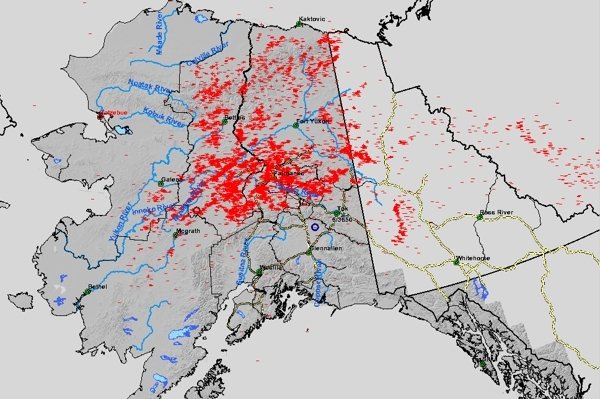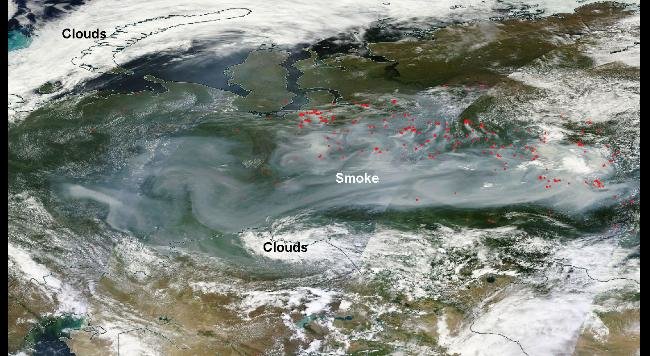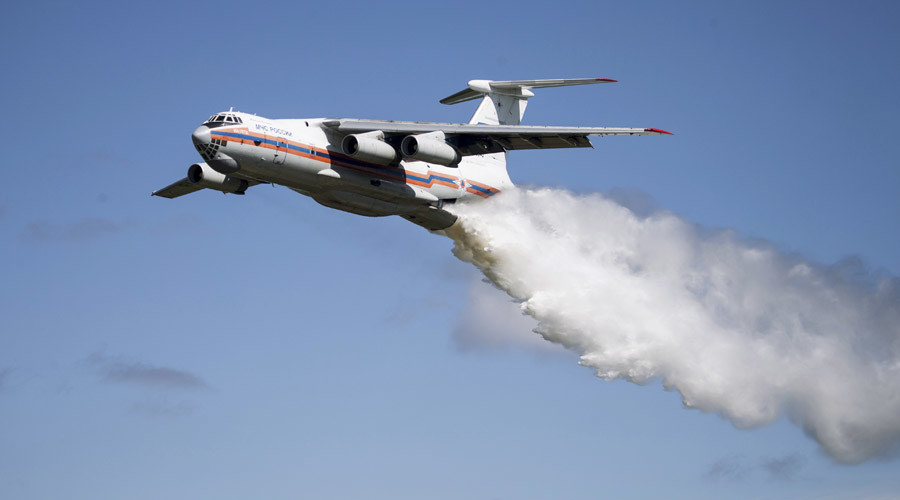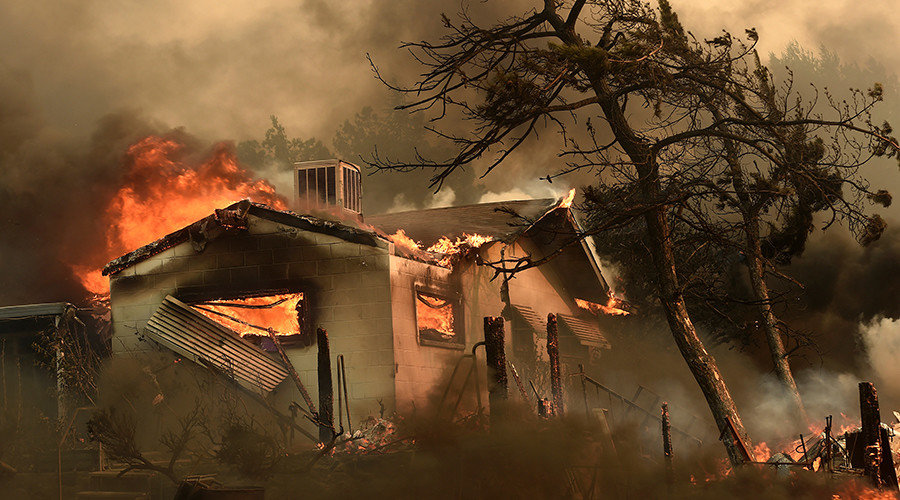
© Courtesy Alaska Interagency Coordination Center10,292 lightning strikes were recorded across Alaska between 6 a.m. and 6 p.m. on June 26, 2016, according to the Alaska Interagency Coordination Center.
Thousands of lightning strikes over the weekend, especially in northern Alaska, have given wildfire crews more than three dozen new fires to contain and track, including at least three near Huslia.
According to Sunday posts on
the Alaska Wildland Fire Information blog, maintained by the federal Bureau of Land Management's Alaska Fire Service,
about 18,000 new lightning strikes were reported across the state from Friday through Sunday evening, including 10,292 in a 12-hour period from 6 a.m. to 6 p.m. Sunday."By 10 p.m. Sunday, there were an
estimated 37 new fires reported throughout the state including a few false alarms," fire officials wrote. "Initial attack suppression efforts are underway on several fires with more discoveries anticipated Monday."
Alaska Fire Service spokeswoman Beth Ipsen said in an email Monday morning that numerous tasks remained for fire crews in the wake of the weekend's lightning.
"Things will be changing a little bit today as we add more crews to some fires, fly other fires to see where they're burning and check other areas that recorded lightning strikes to see if anything ignited," Ipsen wrote.
The fire service reported 24 of the new fires are within the service's jurisdiction, with at least four new fires being actively fought by firefighters Sunday.
"Five loads of smokejumpers were dispatched to five different fires at different times Sunday," fire officials wrote.




Comment: See also: California wildfire nearly doubles in size to 20,000 acres